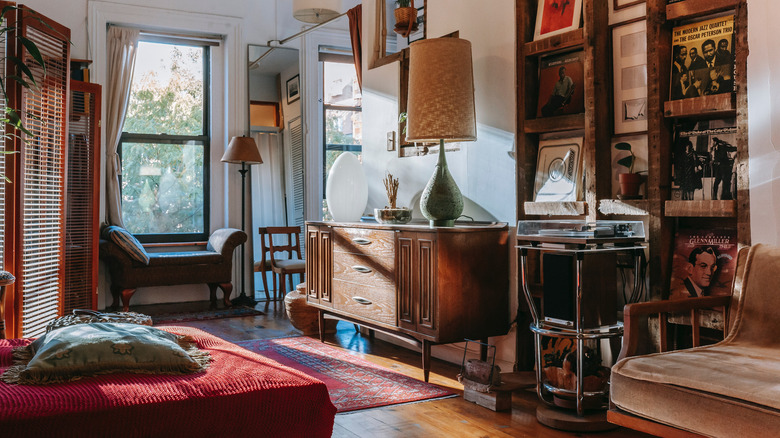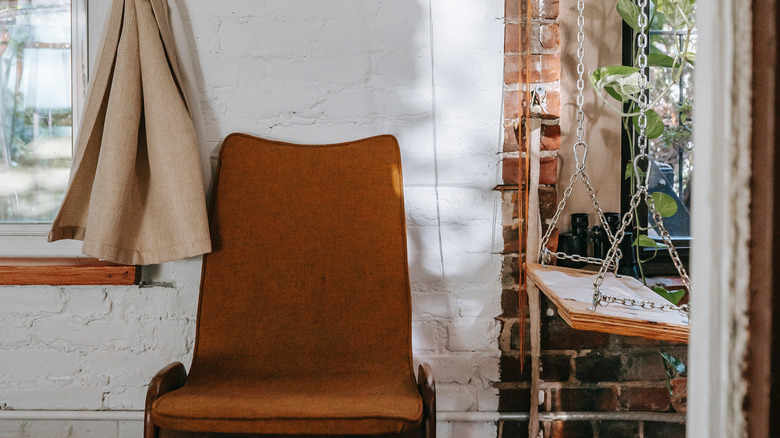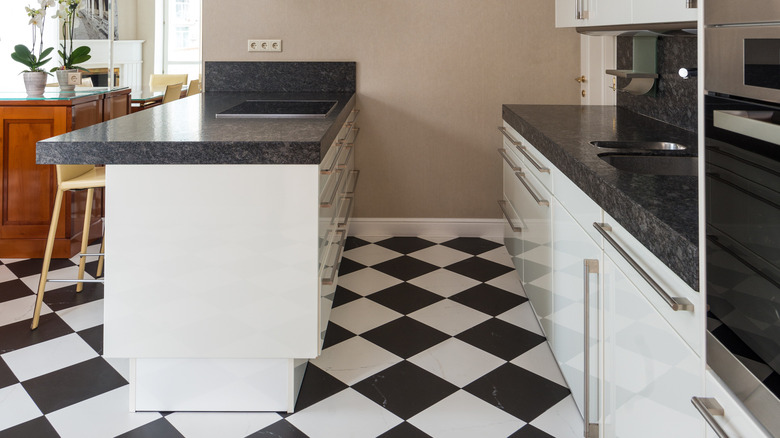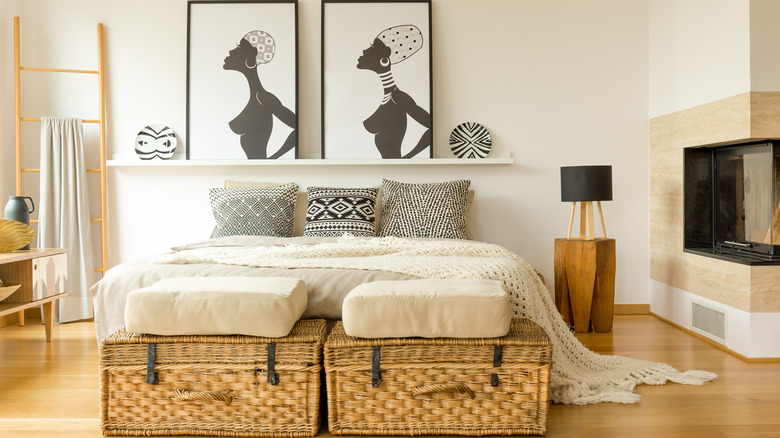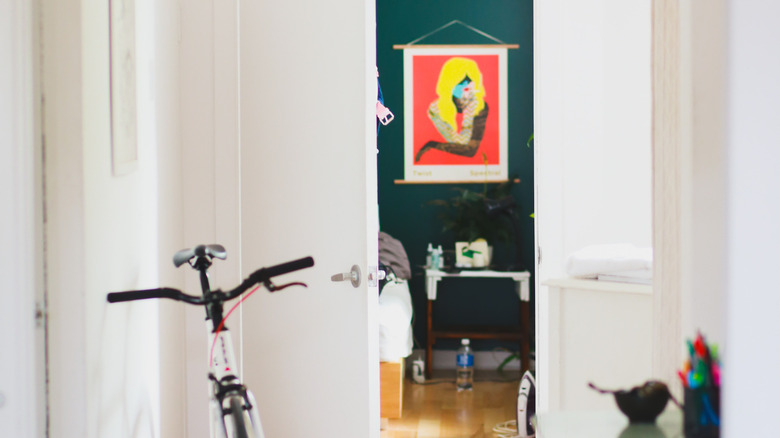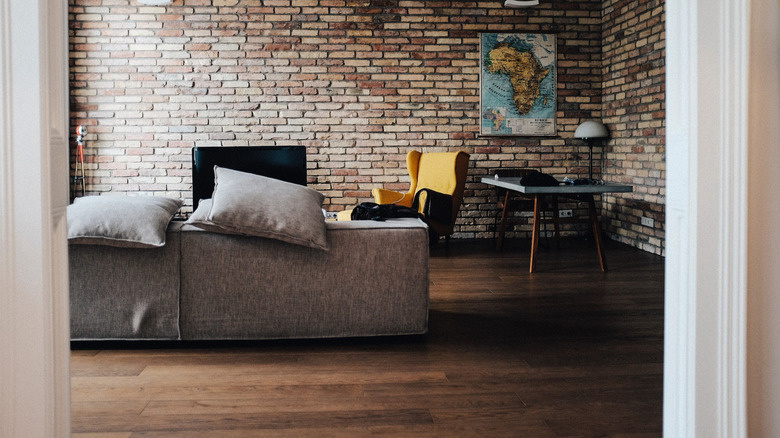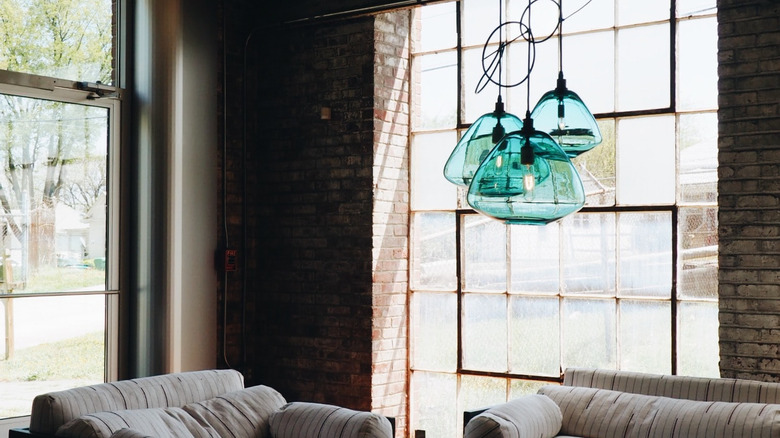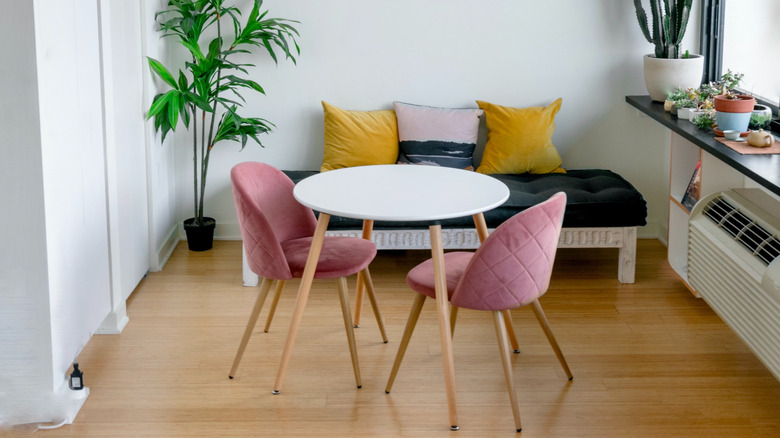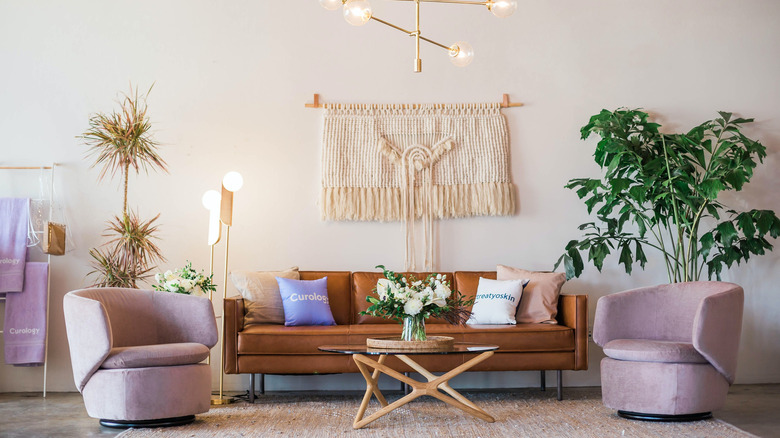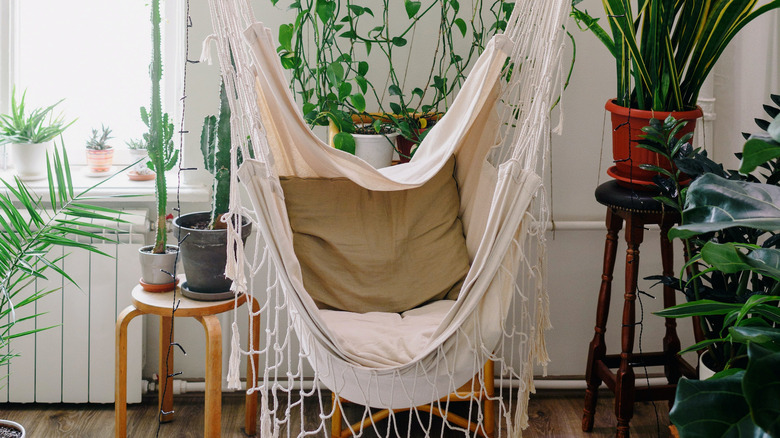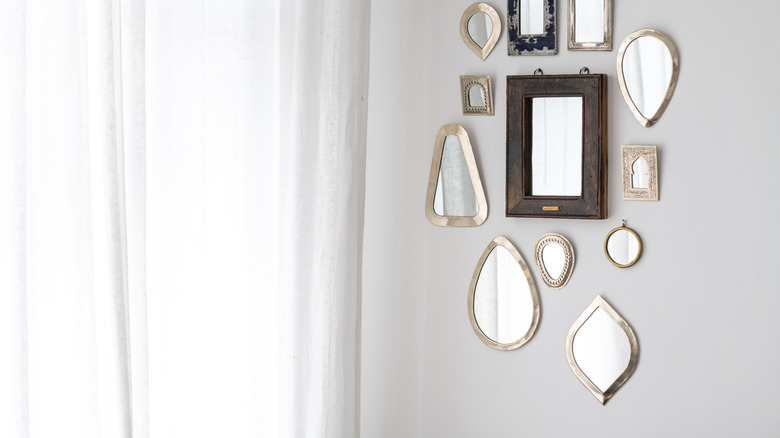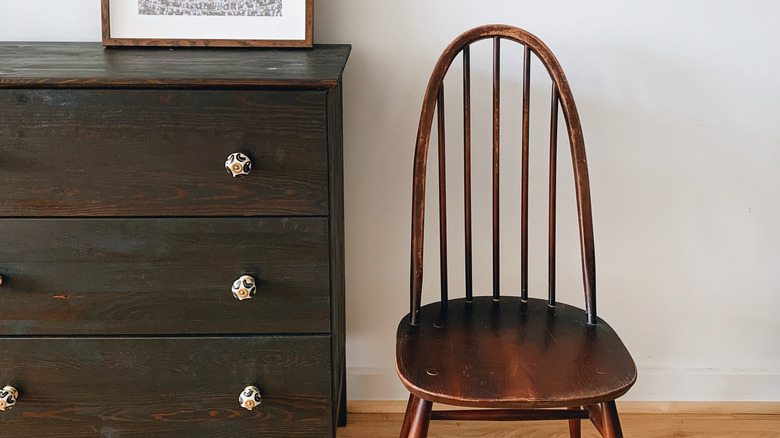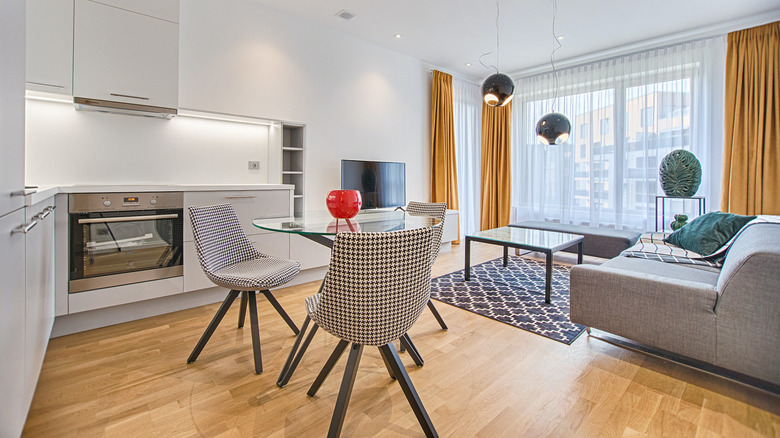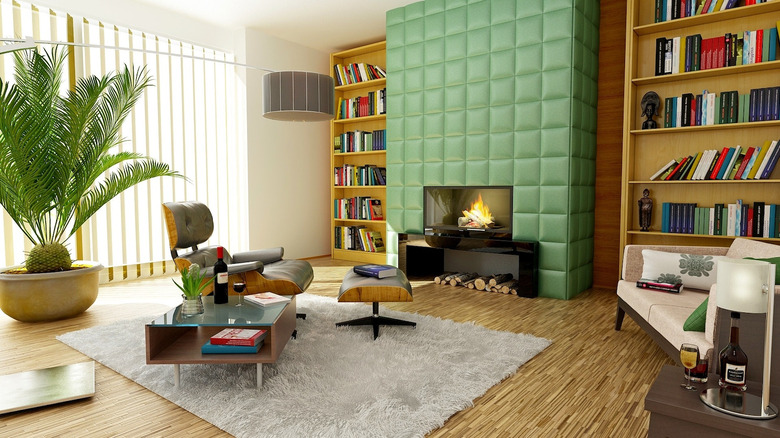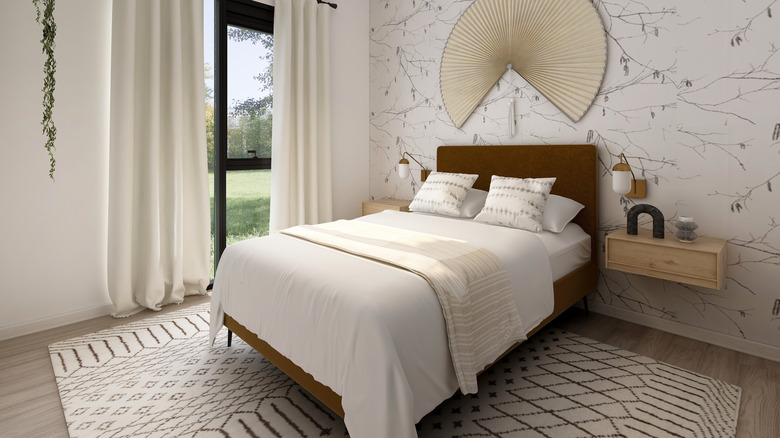The Ultimate Guide To Retro Decor
Do you love the look of the past but with a contemporary flair? A retro-inspired home might be for you! According to Architecture Art Designs, homes decorated in retro style contain similar elements from many different eras, including the 1950s and 1980s. Decorating your home in retro style means looking to the past for inspiration. Aim to combine vintage finds with modern designs to create an updated yet nostalgic atmosphere.
One way to successfully mix and match furniture to achieve this decor style is by pairing a modern sofa with a thrifted coffee table or sourcing a vintage dresser for a velvet bed frame. Find cohesion amongst furniture pieces and small decor items to create a contemporary retro scheme. Now is the time to look for vintage finds and hidden retro treasures in the attic, flea markets, or antique shops. Bring these pieces out into the open to give your space the ultimate retro feel.
Choose your colors wisely
According to SFGate, the 1950s were a time of optimism. Furniture designs were futuristic and space-like with curves and bold colors. Some key colors to consider for a retro look are red, blue, orange, pink, and purple. When pairing colors, consider your patterns since these can mesh or clash with the colors in a space.
When decorating your home, try to find balance amongst bolder elements and limit yourself from adding too many to a space. To create a cohesive look in your home, try to match a floral pattern with a simple line or grid pattern. You could opt for vibrant color by adding an accent rug or chair in a bright shade. Just be sure to find the balance in neutral elements like walls and floors. Although retro designs are typically infused with vibrant hues, sticking to a black-and-white color scheme is another way to achieve a retro look. You can also mix and match vibrant and neutral shades. There are no boundaries when it comes to color in retro '50s decor.
Use bold patterns on the walls and floors
If decorating with bright colors is not your style, consider other ways to bring life to your walls and floors. After all, to create a retro style, you have to add color somewhere! Aim to make a dramatic statement by adding bold patterns to your home on a large scale.
Geometric rugs and abstract wallpaper prints are ideal for adding a retro touch. Another excellent decor element is a black-and-white checkered tile floor. According to Dengarden, this classic pattern blends effortlessly with a neutral palette. This pattern was popular in the 1950s and can be done in various colors in homes today for a contemporary twist. If checkers aren't your thing, consider a floral or damask wallpaper pattern for your walls. Wallpaper often introduces movement into an otherwise static space. While bold patterns often clash, mixing good pieces with a neutral palette looks harmonious.
Mix materials for an authentic design
Retro style spans several decades and incorporates a mixture of different materials. Mixing items made with diverse materials in your home adds depth and texture. Some popular materials to consider for your retro furnishings are rich woods, metals, and wicker.
According to Better Homes & Gardens, rattan furniture adds a fresh and funky update to retro style. The lightweight material features an ancient weaving technique that became popular in the 1960s. It's now a staple in modern homes and is available in unexpected shapes and color pairings. You could complement a versatile wicker or rattan chair with a marble and metal accent table or a wood credenza. The table adds congruence while tapered legs underneath showcase a classic mid-century modern element. Pairings like these are excellent for adding a retro style to your home. Contrasting pieces in the same room show evolution, change, and character.
Create a focal point with abstract art
If you are looking for another way to introduce some color into your space, consider hanging eye-catching artwork on the walls. Abstract, optical, kaleidoscopic, and psychedelic designs fall under retro decor. According to Envato, pop art is a signature element of the 1960s style, combining symbols of popular culture with vibrant colors and a twist of irony. Adding pop art to your walls is sure to make a bold statement.
However, you have plenty of other wall art options at your fingertips. Source bold patterns with clean lines or look for graphic ovals, circles, squares, and diamond shapes. Decorating with artwork is a unique way to express your personality and start conversations. Since the goal is to create a focal point in the room, consider the weight, size, and shape before finalizing the placement of your art. If you love several different pieces, bring all of them home and create a gallery wall with a cohesive color scheme.
Choose unique furntiure shapes
The retro style combines vintage and mid-century modern forms in a contemporary environment. To achieve the perfect harmony of furniture elements in a space, consider the shape of the pieces in conjunction with other aspects. The furniture shape is vital when completing a retro look, especially when mixing furnishings from different eras.
According to Homenish, the idea is to select furniture with unusual shapes without sacrificing practicality. The ideal retro interior includes furnishings that are functional and comfortable. Much like mid-century modern, retro decor highlights usable pieces. For example, you could pair a velvet chair with tapered legs and an ornate sofa table. This mix-matched style creates an abstract focal point in a room and balances old and new elements. The unique shapes add fluctuation in the space, often separating stagnant items. Another way to establish a modern retro look in your home is to pair a muted, streamlined sofa with an egg-shaped accent chair.
Illuminate the space with eclectic lighting
Retro lighting is all about the aesthetics. The style of light you choose to hang from the ceiling, set on the floor, or place on a sofa table can make all the difference. When selecting a fixture, look for a distinctive shape with personality. Retro decor is all about bold and daring designs, so incorporate this aspect into your home through lighting.
According to Better Homes & Gardens, you can achieve a retro atmosphere by swapping out modern light fixtures for ones with metallic or glossy finishes and geometric shapes. If home furnishings are contemporary, vintage lighting will contrast beautifully with existing style elements. For example, you might pair funky glass pendant lights from the 1970s with a sleek and modern kitchen. You can decorate a formal sitting area with dramatic and curving floor lamps to make a statement. The combination of pieces from different eras is part of what makes retro decor appealing.
Elevate the space with texture
According to Flea Market Insiders, there's no such thing as too much texture in retro designs. You can introduce retro textures to your space through shag carpeting, soft vinyl, plush velvets, and smooth surfaces. Use expressive textures such as gray shag carpets and pink velvet chairs to create a funky look. Don't be afraid to get bold and eclectic with your choices.
Creating the ultimate retro look in your home requires layering different textures together, often in unexpected ways. Ideally, your living space should display items you genuinely like and pop with bold colors. Incorporate color by decorating with bright chairs, sofas, tables, carpets, vases, flowers, or art pieces. Find what textures appeal to your unique sense of style and incorporate them into your home. If you want to bring the spirit of the 1970s to your home, hang a carpet on your living room wall.
Accessorize with retro-inspired details
To prevent your space from becoming overwhelmed with too many furnishings, layer in a few accessories. According to Foter Magazine, wall tapestries, scoop stools, lava lamps, door beads, or old rotary phones help create a cohesive, retro-inspired look in the home. Look for pieces with warm colors and tactile materials, like a burnt orange macramé wall hanging. These items are not to be left standing alone but instead should add to existing furniture in the room.
There are no limits to how eclectic your accessories can be. If refined aspects of retro decor stick out to you, such as chrome accents and marble tabletops, then add them to your look. Opt to keep the furniture style simple but accessories bold and dramatic. Pairing uncommon finds with contemporary furniture is a suitable way to express your style. Plus, it updates the retro style for use in the modern home.
Think outside the box with your seating
The retro look works best when distinct pieces in a room come together and form a cohesive whole. For example, placing a cozy hammock in your living room that fits the space while serving a purpose is a great way to achieve retro style. If hanging a chair from the ceiling is too adventurous for you, consider stacking a pair of poufs in a corner or using it as a coffee table. Otherwise, use vintage steamer trunks as coffee tables or for storage at the end of your bed. Source unique, retro chairs from local flea markets for use around your dining room table. These elements boost purpose and functionality in any home.
According to Designbx, you can also consider further alternative seating arrangements such as hanging pod chairs, day loungers, beanbags, and oversized footstools. Small elements like these are ideal for creating more seating options in compact spaces. Plus, they perfectly capture the retro spirit.
Create a gallery wall with funky mirrors
Mirrors are great for reflecting light and instantly brightening a room. According to Apartment Therapy, decorating with mirrors allows you to create a unique vignette and create the illusion of more space. Positioning your mirrors next to a window can instantly flood a room with light. When selecting mirrors for your home, pay close attention to the shape. A round mirror will soften the look and balance hard materials, while a rectangular or square shape is ideal for creating a simple look with clean lines (via Homes & Gardens).
If you want something more extraordinary, complete your retro-inspired space with a gallery wall of circular or square mirrors. While classic shapes will complement a room and never go out of style, you cannot pass up an opportunity to add character through your mirrors. If you have proper wall space, hang up an ornate mirror with a funky frame.
Add sustainable elements
A central aspect of retro-inspired style in the home is sustainability. You want to blend old and new pieces that feel timeless and can withstand years of use. Focus on maximizing the longevity of items and try to source items made of durable wood and metal materials. According to The Spruce, you can find retro furnishings at antique marts, estate sales, and online sources. Retro furniture is an attractive option for decorators since it often inspires feelings of nostalgia and another era. Adding these convivial finds to contemporary homes will create a fun, retro twist.
Previously discarded pieces could become a work of art in the proper space. It's all about the saying, "Beauty is in the eye of the beholder." Try to look at it as a treasure hunt as you search through local thrift shops and retailers for vintage finds that add character to your room.
Choose chrome appliances for your kitchen
No room is off-limits when decorating, so do not shy away from adding retro touches to your kitchen or dining room. Look for chrome accents and rounded edges if shopping for a new refrigerator or stove. These were popular features for appliances in the 1950s and 1960s. Smeg and Big Chill are great brands known for retro-style fridges, ovens, and stoves.
If your space does not need larger appliances, consider adding small appliances and decorative details. A retro styling tip to consider when decorating with smaller kitchen items is to focus on sourcing ones produced with contemporary functionality. Many brands have created retro-style kitchen products like toasters, compact ovens, utensils, and coffee makers (via Adorable Home). Chrome, white, cherry red, or black are popular color options to spice up your countertops. Create maximum retro impact by matching your appliance colors.
Decorate with functionality
When adding retro furniture, rugs, and carpets to your space, consider how items will function in daily life. According to The New York Times, decorating choices should be influenced by how you live and what you typically do in your space. A room comes together naturally when the items you choose are purposeful. If you fill a space with repetitive decor elements like scented candles or glass jars, the look becomes overwhelming. Balance is lost when clutter takes over, so choose your decorations carefully and wisely.
Some practical decorating tips include using decorative glass jars to hold TV remotes or layering a tray on top of an ottoman or pouf for drinks, snacks, magazines, books, and other small items. Look for decor items such as coffee tables with shelves and extra storage space. If seeking something on a smaller scale, consider decorating with baskets or blanket ladders.
Balance negative and positive space
Blank space is also a key element in successful interior design. Including negative space in your room allows you to see pieces as they are. If your room has too much bulky furniture and accessories, you won't be able to tell where one piece ends or the other begins. According to Homes & Gardens, gaps created between furnishings make a room feel comfortable and cozy. The spaces naturally formed by furniture elements create a welcoming environment.
Designing a simple layout that prioritizes functionality creates a space where you will want to spend time. You and your guests should maneuver around the features of a room with ease and not trip. Natural pathways are the perfect way to balance positive and negative spaces. Find balance in a room by keeping the "less is more" approach in mind. This will allow your retro style to shine in every room.
